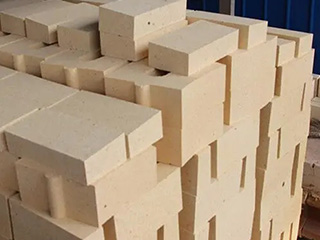High alumina bricks are an essential component of cement kilns and boilers due to their ability to withstand high temperatures, resist corrosion, and provide excellent insulation. In this article, we will explore the importance of high alumina bricks in cement kilns and boilers, their properties and benefits, and the different types of high alumina bricks used in industry.
Importance of High Alumina Bricks in Cement Kilns and Boilers
Cement kilns and boilers operate at extremely high temperatures, ranging from 1300°C to 1800°C, and are subject to harsh conditions such as thermal shock, abrasion, and chemical attack. High alumina bricks are used to line the walls, floors, and roofs of these kilns and boilers to protect them from these harsh conditions.
High alumina bricks provide excellent insulation, reducing heat loss and energy consumption in the kiln or boiler. This can result in significant cost savings for cement manufacturers and other industries that rely on high-temperature processes. High alumina bricks also offer good resistance to corrosion and abrasion, ensuring that they maintain their shape and integrity even under harsh conditions.
Properties and Benefits of High Alumina Bricks
High alumina bricks are made from high-purity alumina and other refractory materials. The percentage of alumina in the brick determines its properties and resistance to heat, abrasion, and chemical attack. High alumina bricks can have alumina content ranging from 45% to 99%, with the highest purity bricks having the best resistance to corrosion and thermal shock.
Some of the key properties and benefits of high alumina bricks include:
1.High temperature resistance: High alumina bricks can withstand temperatures up to 1800°C, making them ideal for use in high-temperature applications.
2.Thermal shock resistance: High alumina bricks have excellent resistance to thermal shock, which is critical in applications where rapid temperature changes occur.
3.Corrosion resistance: High alumina bricks are highly resistant to chemical attack, making them ideal for use in corrosive environments.
4.High mechanical strength: High alumina bricks have high mechanical strength, ensuring that they maintain their shape and integrity even under harsh conditions.
5.Excellent insulation: High alumina bricks offer excellent insulation, reducing heat loss and energy consumption in the kiln or boiler.

Types of High Alumina Bricks
There are several different types of high alumina bricks used in cement kilns and boilers, each with their unique properties and benefits. The most common types include:
1.Standard High Alumina Bricks: Standard high alumina bricks have an alumina content of around 45% to 55%. They are commonly used in cement kilns and boilers due to their excellent thermal shock resistance and high mechanical strength.
2.Super High Alumina Bricks: Super high alumina bricks have an alumina content of around 75% to 95%. They offer excellent resistance to corrosion and abrasion, making them ideal for use in highly corrosive environments.
3.Low Iron High Alumina Bricks: Low iron high alumina bricks have a low iron content, making them ideal for use in applications where iron contamination must be avoided. They offer good resistance to thermal shock and corrosion.
4.Mullite High Alumina Bricks: Mullite high alumina bricks are made from mullite and high alumina materials. They offer excellent thermal shock resistance and high mechanical strength, making them ideal for use in cement kilns and boilers.
5.Spinel High Alumina Bricks: Spinel high alumina bricks are made from spinel and high alumina materials. They offer excellent resistance to thermal shock and abrasion, making them ideal for use in harsh environments.
Conclusion
In conclusion, high alumina bricks are anessential component in cement kilns and boilers, providing excellent thermal insulation and resistance to thermal shock, abrasion, and chemical attack. The choice of high alumina brick will depend on the specific requirements of the industry and the process. Super high alumina bricks are ideal for use in highly corrosive environments, while mullite high alumina bricks offer excellent thermal shock resistance and high mechanical strength. Low iron high alumina bricks are ideal for use in applications where iron contamination must be avoided.
It is crucial to choose the right type of high alumina brick and to ensure their regular maintenance to ensure their longevity and effectiveness. Over time, high alumina bricks can become damaged due to thermal shock, chemical attack, or mechanical stress. Regular inspection and repair can help to prevent any serious damage to the equipment or structures.
In summary, high alumina bricks play a critical role in cement kilns and boilers, ensuring the safe and efficient operation of equipment and structures. The selection and maintenance of high alumina bricks should be given careful consideration to ensure their effectiveness and longevity.
Contact: Mgr. Han
Phone: 0086-13589497465
Email: 1255953279@qq.com
Add: Industrial Area of Lingzi Town,Zichuan District,Zibo City, Shandong,China